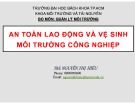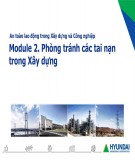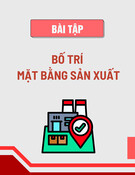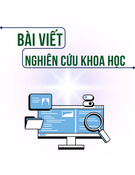
TBM (Tool Box Meeting)
H p Giao ban/giao caọ
Trong xây d ngự

2
Module 3: An toàn lao động trên các công trường
Bài 3: : TBM (Tool Box Meeting) Họp giao ban/giao ca
1) Thời gian: 1h lý thuyết, 1h thực hành
2) Trang thiết bị/vật tư
- Máy chiếu, máy tính, loa
3) Mục tiêu chính
- Người học hiểu mức độ quan trọng của các cuộc họp giao ban/giao ca trên công trường và cách
thức tiến hành các cuộc họp đó.
- Người học sẽ tổ chức cuộc hợp Giao ban/giao ca có sử dụng hướng dẫn họp giao ban/giao ca và
làm bài thuyết trình.

3
Module 3: An toàn lao động trên các công trường

4
Module 3: An toàn lao động trên các công trường

5
Module 3: An toàn lao động trên các công trường
Nội dung
A. Định nghĩa và quá trình họp Giao ban/giao ca (TBM)
1) Định nghĩa: Một cuộc họp hay hoạt động không chính thức tổ chức tại công trường tập trung vào
chủ đề an toàn lao động liên quan đến một công việc cụ thể ví dụ như: các mối nguy hiểm tại nơi làm
việc và thực hành làm việc an toàn.
2) Quá trình: Các bài tập đơn giản, Thực hành tại chỗ, Các chủ đề vầ an toàn v.v.
3) Mục tiêu: Làm tăng mức độ quan tâm đến một khía cạnh cụ thể của công việc, to reinforce safety
consciousness













![Tối ưu hóa hiệu suất hệ thống: Bài thuyết trình [Chuẩn nhất]](https://cdn.tailieu.vn/images/document/thumbnail/2025/20251107/hiepdz2703@gmail.com/135x160/35941762488193.jpg)




![Bài giảng Quản trị chất lượng trong công nghiệp thực phẩm [chuẩn nhất]](https://cdn.tailieu.vn/images/document/thumbnail/2025/20250805/vijiraiya/135x160/637_bai-giang-quan-tri-chat-luong-trong-cong-nghiep-thuc-pham.jpg)

![Đề cương bài giảng Kỹ năng hoạt động công nghiệp [mới nhất]](https://cdn.tailieu.vn/images/document/thumbnail/2025/20250715/kimphuong1001/135x160/76971752564028.jpg)


![Bài giảng Kỹ thuật điều độ trong sản xuất và dịch vụ [mới nhất]](https://cdn.tailieu.vn/images/document/thumbnail/2025/20250630/dcbaor/135x160/13121751251866.jpg)


